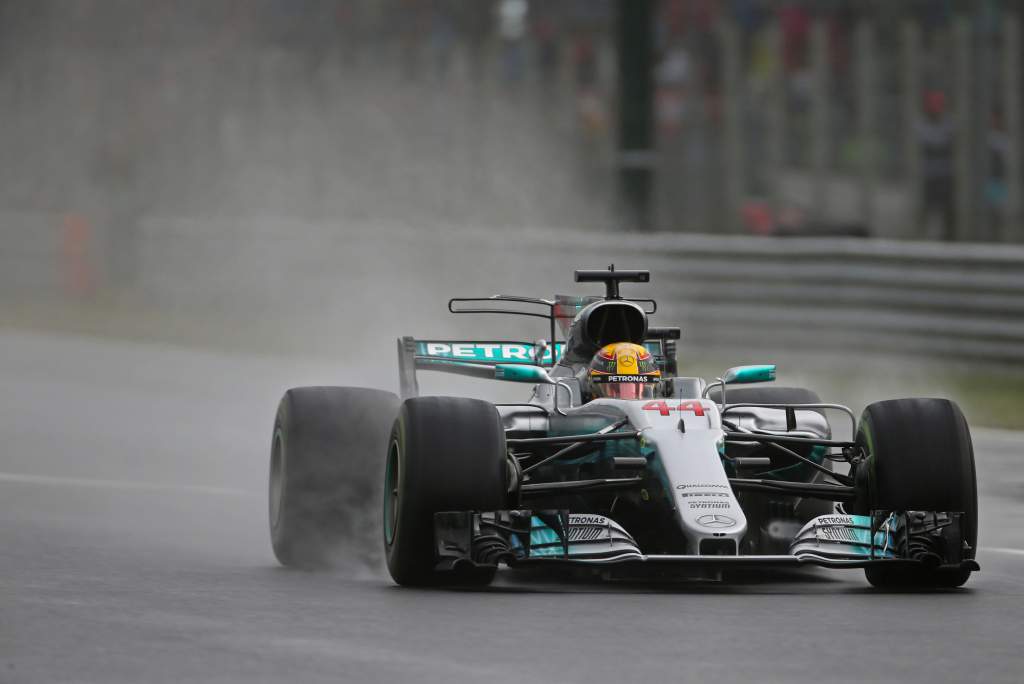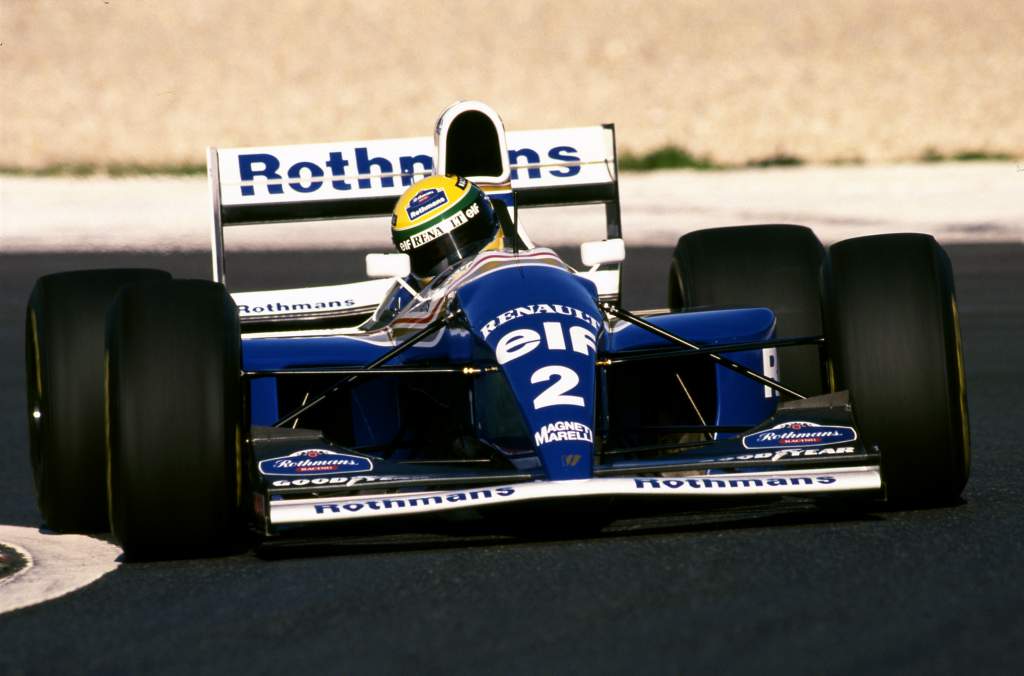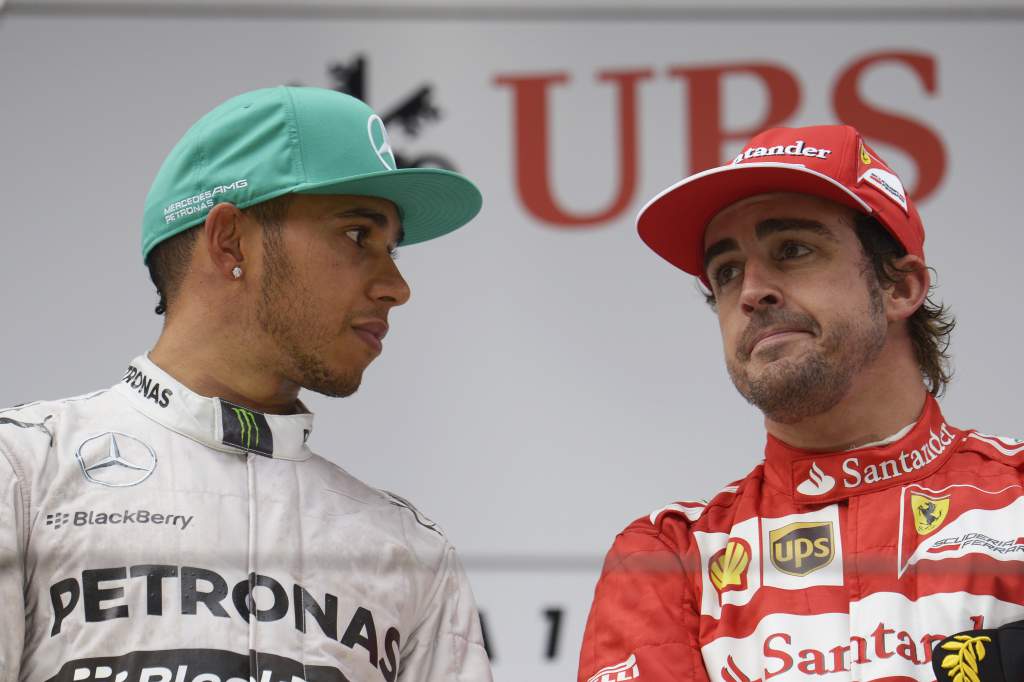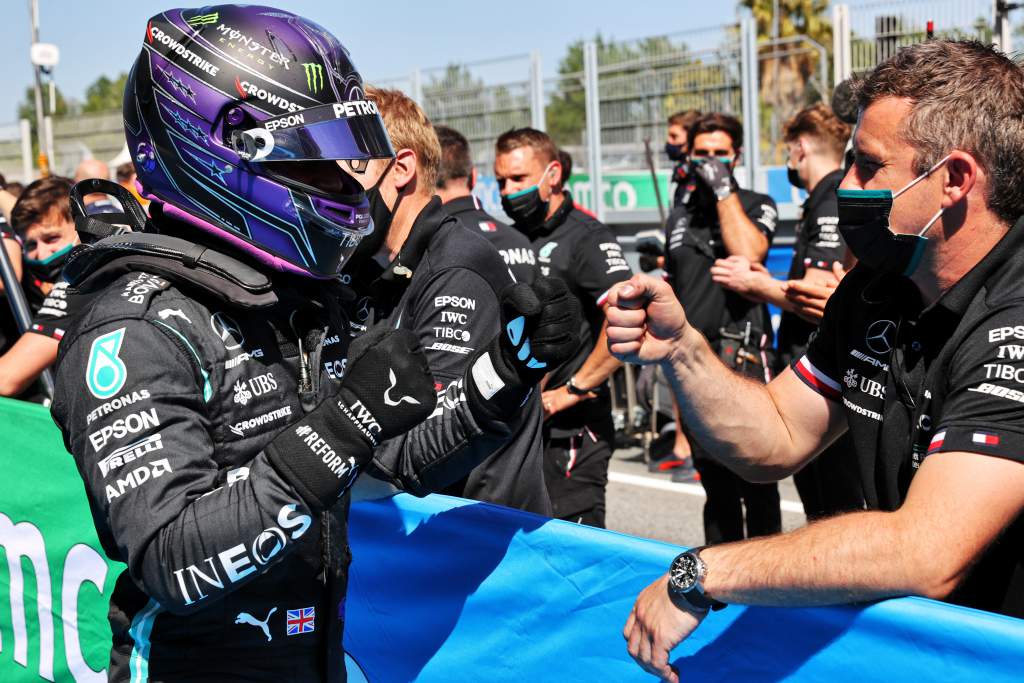Up Next

Lewis Hamilton didn’t know how to feel or what to say when asked about becoming the first driver to reach 100 Formula 1 pole positions in qualifying for the Spanish Grand Prix. And who can blame him?
It’s an arbitrary number that isn’t imbued with any substantively greater significance than his 99th pole position, just another brick in the wall of an astonishing qualifying record in F1.
But our instinctive belief in the significance of landmark round numbers means it’s only natural to ask what it means.
“It’s such a big number that it’s hard to express just how crazy it is and amazing is” :: Lewis Hamilton
“I don’t really feel like I can compute it right now, it’s a huge number,” said Hamilton when asked by The Race about his achievement.
“I don’t know how I am supposed to feel but I’m excited that it was so close.
“Qualifying is so special, when you come across that line and you find out you’re just ahead and thinking ‘OK, how am I going to squeeze out more, will the other guys find a tenth or two or three in the next run, or none at all?’
“It’s such a big number that it’s hard to express just how crazy it is and amazing is. I don’t really know what to say.”

Let’s try to help Hamilton out by putting the numbers into context. He has 100 pole positions in 269 attempts, secured over 15 seasons with McLaren and Mercedes. He has had sole ownership of the F1 pole position record since taking his 69th at the 2017 Italian Grand Prix, putting him one clear of Michael Schumacher.
Since then, Hamilton has taken the record to a place that once seemed impossible. He is close to taking half as many pole positions again as Schumacher’s mark of 68 in 308 attempts, and well clear of Ayrton Senna’s mark of 65 in 162 attempts.

Numbers can be sliced and diced any way you like and can only ever partly inform an argument. Hamilton’s strike rate for pole positions is better than Schumacher’s, but not as good as Senna’s. His average advantage when taking pole is 0.291s. Senna’s was 0.528s and Schumacher’s 0.307s.
Look further back and Juan Manuel Fangio was F1’s original pole position record-maker with average advantage of 1.7s. In the 1960s, standard-setter Jim Clark’s average gap was 0.947s, dropping to 0.618s for Jackie Stewart.
That’s in keeping with the general trend for gaps to get smaller as time goes on. You could argue a larger margin means greater supremacy or weaker competition, and vice versa, meaning those comparisons mean little more than reflecting how times has changed.

But what all of those drivers have in common is sustained excellence, which Hamilton has had to produce given he’s been up against drivers of the calibre of Sebastian Vettel (57 poles) and Fernando Alonso (22 poles), as well as rising stars Max Verstappen (four poles) and Charles Leclerc (seven poles).
That average advantage 0.291s feels like a large number in F1 terms, but it still only amounts to a cumulative 29.1s over those 100 pole positions. Those 29 seconds over 14 years and a couple of hours of qualifying laps show how minuscule the margins are. We throw around tenths of a second as if they are lifetimes, which they are when it comes to F1 qualifying, but every fraction of a second is the aggregate of countless processes, unconscious and conscious, in the driver’s mind.
“He’s just operating on this extremely unseen level,” said team principal Toto Wolff of Hamilton’s achievement. “Today the car wasn’t perfect, and he just edged the other ones out.
“The 100 poles is incredible. [Mercedes’ trackside engineering director] Andrew Shovlin was just saying that if you put all his pole laps together in a video it would last two hours. So that just shows me what he has achieved.”
What Hamilton’s numbers prove beyond any doubt is his underlying speed, consistency and adaptability. He’s racked up the poles for two different teams whether in dry or wet conditions, taking on his elders, contemporaries and the next generation of stars and prevailing.
Hamilton has thrived on Bridgestone and Pirelli rubber, qualifying with or without race-start fuel and in turbo hybrid and normally aspirated engines. Granted, it’s arguably not quite as extreme as the changes some of his predecessors went through, but he’s mastered every challenge thrown at him. In doing so, he’s become the central point of the massive industrial machine that is the Mercedes Formula 1 team.
Yes, he has been in a car good enough to take pole positions, which is the eternal criticism. But the same is true of any F1 driver who has had sustained success. The greats of the past didn’t rewrite the laws of physics, they extracted the potential in the machinery that was available to them.
And they, like Hamilton, earned the best cars because of how good they are. The twists and turns of every driver’s career means that numbers can never be directly compared, and who knows how many poles a driver like Alonso might have racked up had he taken a different path, but Hamilton has relentlessly taken his chances.

The task of taking pole position remains, at heart, unchanged even if the way you go about it has been transformed. And Hamilton is a master at it, refining the raw material of his searing speed into something more brilliantly dependable.
This has been laid bare so far this season. The Red Bull is a strong car and Verstappen has shown he had the pace to take pole position for three out of four races. Instead, thanks to Hamilton’s excellence, Verstappen has achieved just one pole this year.
The last two Hamilton poles have been achieved through an often-underrated skill – that of ensuring the first run in Q3 is nailed. Changing conditions have prevented Verstappen hitting back on the last two weekends, but that’s nothing to do with bad luck.
It’s tempting to boil qualifying excellence down to one thing: speed. But that can be broken down into so many constituent parts and what Hamilton has shown over the years is his adaptability, his capacity to get on top of the tyre management required for a qualifying lap – something that is key at Barcelona – the ability to improvise amid changing grip levels and weather conditions. Verstappen, is still refining his game and up against this level of competition even the tiniest of rough edges can make the difference.
Statistically, Hamilton is F1’s greatest qualifier by sheer weight of numbers. But while there’s no way to answer the question of who is F1’s actual greatest qualifier definitively, there’s a bigger question to ask.
This is because Hamilton’s remarkable number of pole positions is just one part of his astonishing success. In the coming months, he will rack up a century of wins and potentially even become the first driver to win eight world championships.

The question isn’t whether Hamilton is F1’s greatest qualifier, but a far bigger one than that. After all, you can make a strong argument that qualifying isn’t even Hamilton’s strongest suit given how well he executes races.
The question of where Hamilton stands among the greats can never be answered with certainty. Greatness is too abstract a concept, meaning different things to different people, to do that.
But what this latest landmark is further proof of, if it were needed, is that we are witnessing not just one of motor-racing’s greats, but a sporting great making history every time he jumps in the car.
No surprise Hamilton struggles to “compute” the achievement.





